Fruits
Apples
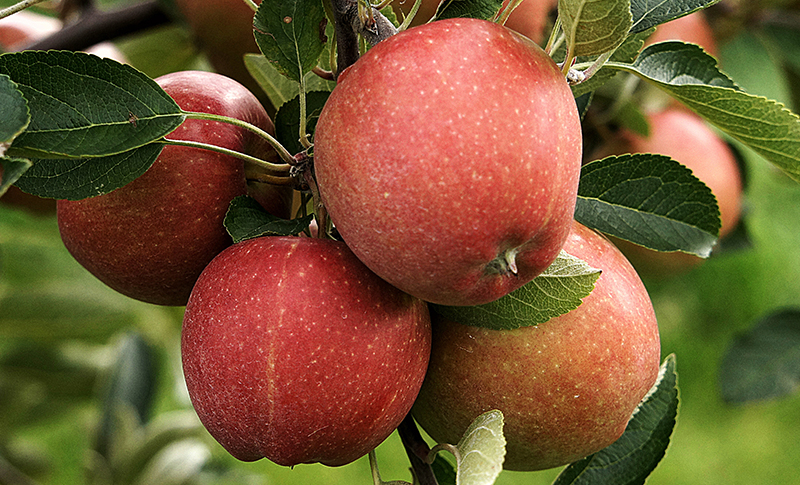
- Of all the tree fruit crops, apples and peaches are best adapted to Oklahoma conditions.
- The best apple varieties for Oklahoma are McLemore, Gala, Jonathan, Red Delicious, Golden Delicious and Fuji.
- Apples bloom later and are less susceptible to spring frosts.
- The crabapple is the only apple native to North America.
- The pilgrims planted the first apple trees in the Massachusetts Colony.
- The science of apple growing is called pomology.
- Apples are a member of the rose family.
- There are approximately 7,500 varieties of apples around the world. Only about 100 are grown commercially in the US, and the top 10 varieties account for 90 percent of the crop.
- Americans eat 19 pounds of apples annually--about a quarter of the 46 pounds consumed annually by Europeans,
- The most popular varieties are Red Delicious, Golden Delicious, Granny Smith, McIntosh and Jonathan.
- The red delicious apple emerged from an Iowa orchard in 1880 as a round, blushed yellow fruit. Over time, developers bred it to be red to make it more appealing to the consumer. They also made it firmer and juicier.
- The red delicious apple can be stored in hermetically sealed warehouses for up to 12 months.
- The apple harvest in Washington state ends in October. Most apples sold through December are stored in refrigerated warehouses. Fruit shipped later in this cycle is kept in a more sophisticated environment called controlled-atmosphere storage - airtight rooms where the temperatures are chilly, the humidity high and the oxygen levels reduced to a bare minimum to arrest aging. Last year's fruit will be sold through September, just as the new harvest is in full swing.
- Storage apples must be picked before all their starches turn to sugar. If they are picked too late, the apple turns mealy in the supermarket. If picked too soon, the apple will never taste sweet.
- In the 1980s heyday of the Red Delicious, it represented three-quarters of the harvest in Washington state, epicenter of the apple industry. By 2000, it made up less than half, and in 2003, the crop had shrunk to just 37 percent of the state's harvest of 103 million boxes. Red Delicious remains the single largest variety produced in the state, but others are ascending in market share as rapidly as Red Delicious is dropping, notably Fuji and Gala.
- American as apple pie? The first apple pie was reputed to have been baked at Valley Forge.
- The top apple-producing states are Washington, New York, Michigan, Pennsylvania, California and Virginia.
Apricots

- A temperamental plant, apricots need a dry climate in which to thrive. They grow wild in the mountains of north-western China and central Asia and have probably been cultivated for at least 5,000 years.
- Apricots were probably introduced to North America by the Franciscan brothers in California some 200-300 years ago.
- Apricots flourished in ancient Rome and the Moors also established them in Spain. King Henry VIII's gardener imported them to England in the 1500's and grew them in protected walled gardens.
- King Henry VIII's gardener brought the apricot to England from Italy in 1542.
- The poet Ruskin described apricots as "shining in a sweet brightness of golden velvet"
- The Latin name for apricot is praecoquum, meaning early matured (fruit).
- Just three fresh apricots provide 30 percent of the recommended daily amount for beta-carotene (Vitamin A). Apricots also provide Vitamin C, iron, potassium, and fiber among other nutrients.
Blueberries
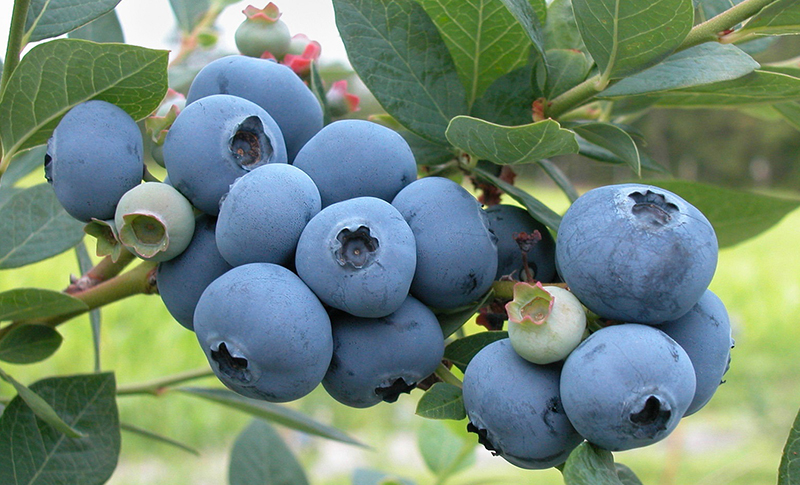
- The blueberry is a native American fruit. Early settlers cherished it as a staple ingredient in foods and medicines. They incorporated the berries into their diets, eating them fresh off the bush and adding them to soups, stews, and many other foods.
- Early American colonists made grey paint by boiling blueberries in milk. The blue paint used to paint woodwork in Shaker houses was made from sage blossoms, indigo and blueberry skins, mixed in milk.
- Blueberries are a good source of fiber and are the best of all fruits and vegetables for their antioxidant activity. Foods containing antioxidants may prevent cancer, heart disease, and other ailments. One-half cup of blueberries delivers as much antioxidant power as five servings of peas, carrots, squash, broccoli and other foods tested.
Cherries
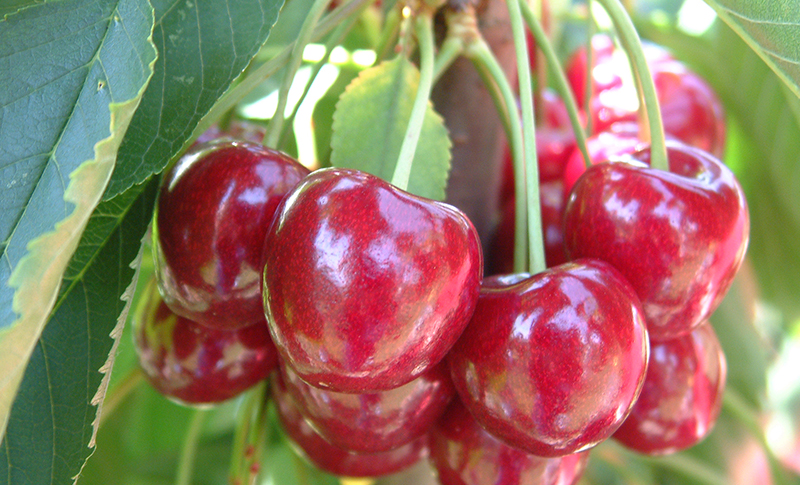
- The US leads the world in sweet cherry production, producing about 370 million pounds every year. Sweet cherries are grown commercially in Washington, Oregon, California. and Michigan.
- Oklahoma is too hot and dry for commercial cherry production, but sour cherries are grown successfully in some home gardens. On large cherry orchards, large machines actually shake the tree to harvest the cherries.
Grapes
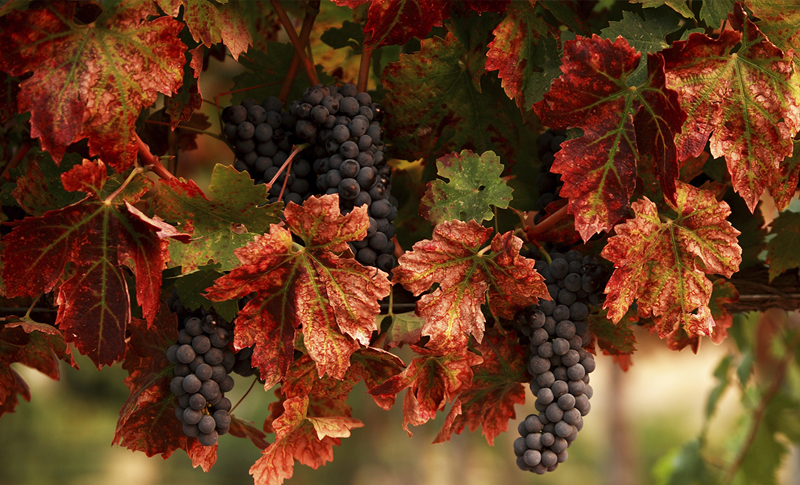
- Grapes were cultivated in ancient Egypt and in ancient Greece and Rome, both for eating and winemaking purposes. From there the cultivation of grapes spread to Europe, North African and finally to North America.
- Leif Ericsson the Lucky of Norway called the east coast of New England Vinland because of all the wild grapes he found growing there.
- Native purple grapes grew wild across North America and were a part of the diet of many native tribes.
- Raisins were probably first produced deliberately in Asia Minor by the process of burying fresh grapes in the hot desert sand.
- The grapes used to make raisins are different from table grapes. Another kind of grape is used to make grape juice.
- All kinds of grapes can be grown in Oklahoma, but most of the grapes we find in the grocery store come from California or Chile.
- The climate and soils of Oklahoma are favorable for grapes. Several species are native.
- About 50 percent of the grapes grown in the US are used to make wine.
- Columbus brought Old World grapes from Europe to Haiti in the New World. They were introduced to the east coast by colonists but were attacked by many pests and diseases. Some of the colonists developed New American varieties by selecting and crossing the better native wild grapes with each other or by crossing wild grapes with European varieties.
- Spanish explorers introduced the grape to America about 300 years ago. The first cultivated grapes in the US were probably grown in California by Spanish Franciscan friars who made wine for California missions.
- The oldest cultivated grapevine in the US grows in North Carolina.
- The Mothervine in Manteo, Roanoke Island, Virginia, is a 400-year-old Scuppernong vine.
- Table grapes are still harvested by hand in many places.
- Grape-growing is the largest food industry in the world. There are more than 60 species and 8,000 varieties of grapes, and they can all be used to make juice and/or wine.
- The best-selling grape in the US is the Thompson Seedless. Golden raisins are made from Thompson seedless.
- Botanically, grapes are berries.
- About 25 percent of the grapes eaten in the US are imported from Chile.
- It takes about 2 1/2 pounds of grapes to produce a bottle of wine.
- One acre of grapes can produce an average 15,000 glasses of wine.
- Grapes have resveratrol, phytonutrients, anthocyanins, catechins and phenols—all good for your health.
Melons
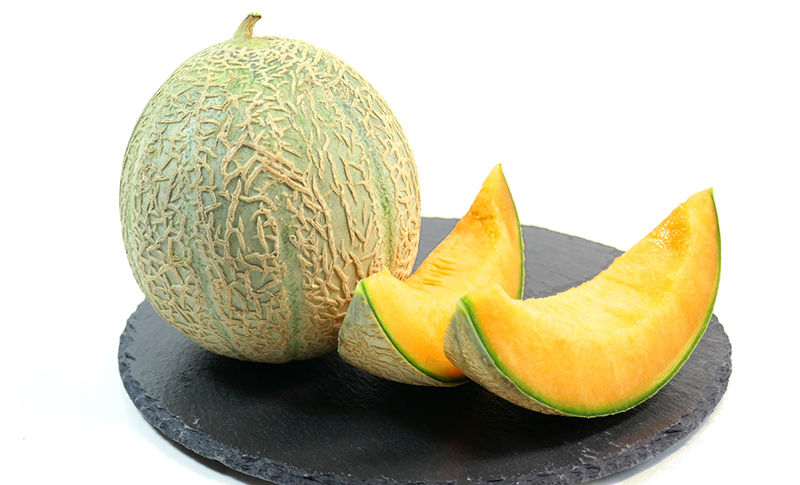
- Melons are warm season crops that thrive in Oklahoma's long growing season.
- All kinds of melons grow in Oklahoma, but our watermelon crop is the most profitable. In 2011 Oklahoma produced 230,000 hundredweight of watermelon, adding about $3 million to our state's economy.
- Columbus brought cantaloupe with him to the New World on his second voyage.
- Melons were grown almost exclusively in home gardens until the first half of the 20th century, when more disease- and wilt-resistant cultivars were developed by the USDA.
- Archaeological evidence suggests the muskmelon originated in Persia about 4,000 years ago.
- The Greeks appear to have known about muskmelon in the 3rd Century BC.
- The North American Indians were growing muskmelons in the 17th Century.
- Cantaloupe is an excellent source of Vitamins A and C, a very good source of potassium and a good source of B6, folate and dietary fiber.
- A melon that is ripe will have a blossom end that is fragrant and gives slightly to pressure.
- Ripe muskmelons or cantaloupes should be tan or gold under their netting.
- Ripe honeydews should be velvety and creamy yellow.
- Ripe crenshaw melons should be golden yellow and green.
- Ripe casabas are ready when the skin turns golden and the flesh white.
- Ripe honeydews, casabas and watermelons should feel heavy for their size and sound hollow when tapped on the rind.
- Avoid melons with shriveled, punctured or cracked rinds.
- Thumping an unripe melon will produce a metallic sound while the sound emanating from a ripe melon will be duller.
- The terms "muskmelon" and "cantaloupe" are often used interchangeably, but this is not accurate. All cantaloupes are muskmelons, but not all muskmelons are cantaloupes.
- Muskmelons include a variety of melons, which run the gamut from cantaloupes to casabas. There are two basic categories: netted and smooth. The skin of a muskmelon can vary in color from creamy white to rich green, while the flesh may be white, green, golden, orange, or even almost salmon colored.
- Melons grown commercially are dependant upon honeybees for proper growth. On average, it takes about 10-15 bee visits for proper pollination.
Peaches
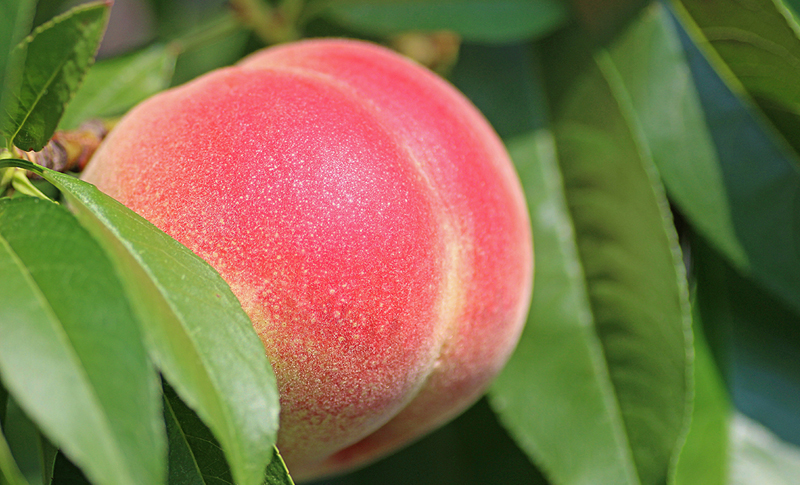
"An apple is an excellent thing, until you have tried a peach." - George du Maurier, British illustrator and author
Oklahoma Peaches
- Many of the tribes located in Indian Territory were growing peaches well before Oklahoma statehood. Travelers through the area reported peaches as one of the foods offered by their Indian hosts.
- Peaches were also an important crop to settlers who moved into the area with the land runs. According to one early account, peaches were being shipped out by the carload within eight years after settlement. Porter, Stratford and Guthrie were some of the areas where peach production was reported early in our history.
- In 1904, Ben Marshall, a Creek allotee from Porter, received a gold medal at the Louisiana Purchase Exposition for the quality of his peaches. Commercial peach production took off in Oklahoma after that.
- Peaches need a reasonably fertile, well-drained soil.
- The major problems for growing peaches in Oklahoma include unpredictable weather conditions, bacterial leaf spot and insect pests. Spring storms bring hail, high winds and heavy thundershowers which may damage peach orchards through limb breakage and loss of fruit during the critical growing period. Peach borers sometimes damage trees, and other insects can cause the fruit to be unattractive to customers.
- The first ripe peaches appear in June. Most of the peaches grown in Oklahoma are consumed within the state and are hand harvested. Because consumers want peaches with few flaws, harvesters must exercise care in harvesting and handling.
- In addition to harvest, peach production includes spraying regularly for pests, pruning either early in the spring or as soon as the leaves start dropping in the fall, grading, choosing and setting out new trees, fertilizing, and thinning the tiny green fruit so each peach has space to develop.
- Some of the popular varieties grown in Oklahoma are Candor, Sentinel, Redhaven, Reliance, Ranger, Glohaven, Nectar, Cresthaven, Autumn Gold, Ouachita Gold, White Hale, Starks Encore and Fairtime.
- Orchards in Stratford and Porter continue to be the areas where most of Oklahoma's peaches are produced. Peach festivals are held each July in Stratford and Porter.
Peach Migrations
- China is widely considered to be the native home of peaches. This is supported by the fact that there is a wide range of wild peach types in the countryside. Originally the peach grew in North China in areas of erosion and overgrazing. They were a symbol of fertility and affection and of immortality and unity. The peach tree is considered to be the tree of life.
- To this day China remains the largest producer of peaches, with Italy second. California produces more than 50 percent of the peaches in the US.
- True wild peaches are found only in China. Unlike the cultivated fruit, the wild fruit is small, sour and very fuzzy.
- Peaches traveled west via the silk roads to Persia (now Iran). In Persia, peaches were discovered by Alexander the Great, who mentions half a dozen types. Alexander the Great introduced peaches to the Greeks.
- By 322 BCE Greece enjoyed the peach, and by 50 to 20 BCE, the Romans were growing and selling them. The Romans called the peach "Persian apple," and the name for peach in numerous languages is the name for Persia. (French peche, German pfirilch, Italian pesca, Spanish melocoton, Portuguese pessego, Danish/Norwegian fersken, Swedish persika, Finnish persikka, Russian persik, Polish brzoskwinia, Serbo-Croat breskva, Romanian piersica, Bulgarian praskova, Greek robakinon, Turkish seftail, Hebrew afarseq, Arabic khukh, Persian hulu, Hindi aru, Chinese tao, Japanese momo, Indonesian persik)
- Spaniards brought peaches to South American, and the French introduced them to Louisiana. The English took them to their Jamestown and Massachusetts colonies. Columbus brought peach trees to America on his second and third voyages.
- Early peaches were propagated by seed, the easiest way to transport the peach plant. Budded trees became available in America around the time of the American Revolution.
- Several tribes of Native American Indians were particularly fond of peaches. In Pennsylvania, William Penn wrote that there was "not an Indian plantation without them." It is probable that the spread of peaches was due to the Native Americans. Thomas Jefferson planted peaches at Monticello in 1802.
- Dried peaches travelled with Americans setting out across the western frontier.
- A peach was the first fruit tree to be patented - in 1932.
- There are two basic types of peaches. One is the clingstone, in which the flesh clings to the stone. Most clingstones are taken ripe from the field and canned within 24 hours of picking. The other variety is the freestone, which can be loosened from the pit with relative ease. These are the fresh peaches most often found in grocery stores.
- The expression "You're a real peach" originated from the tradition of giving a peach to a friend you liked.
- Peaches are sometimes called "stone fruits" because of their pits.
Pears
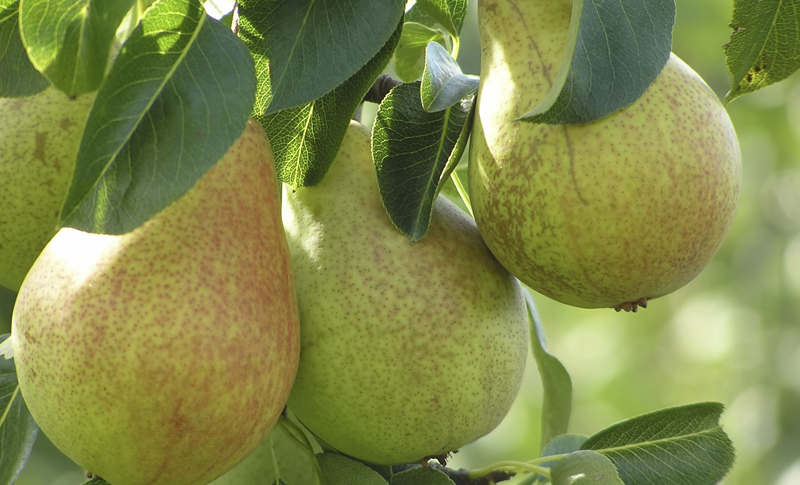
- Pear is the common name for about 20 species of trees of a genus in the rose family, and for their fruit. The common pear is native to Europe; the Chinese sand pear is native to the Orient. Both species are extensively cultivated for their fruit in cool, humid, temperate regions throughout the world.
- The fruit of a pear tree is a pome, juicier than the apple, and varying from apple-shaped to teardrop-shaped. Among different varieties, the thin skin varies in color from light yellow and green through red and brown. The thick flesh varies in flavor among different varieties. In young, unripe common pears, and in young and mature Chinese sand pears, the flesh contains numerous gritty cells called stone cells.
- Pears are gathered from the trees before they are completely ripe and are allowed to ripen in storage. Cold retards ripening, and heat speeds it. Pears are eaten fresh and canned.
- Commercial pear production in the United States averages about 700,000 metric tons annually. The best North American pear-growing districts are in California, Washington, and Oregon and, to a lesser degree, in the northern United States, from New England to the Great Lakes and in lower Canada. Pears are grown extensively in home orchards in Oklahoma and all over the United States.
- Pears contain about 16 percent carbohydrate and negligible amounts of fat and protein. They are good sources of the B-complex vitamins and also contain vitamin C; in addition, they contain small amounts of phosphorus and iodine. Fresh pears offer dietary fiber, much of it in the form of pectin. A pear weighing 166 grams provides 2.32 grams of crude fiber, and 4 grams of dietary fiber, of which 41 percent is pectin. Fiber contains no calories, and is a necessary element of a healthy diet.
- Europeans call some pear varieties "butter fruit" because of their buttery texture when ripe and their sweet and juicy flavor.
- There are several different varieties of pears available from the supermarket. Here are some of the more common varieties.
- Anjou stays light green when ripe and is good for eating raw or cooking. Red anjou have a dark red skin with a contrasting creamy interior. They cost more than green anjou.
- Bartlets are sweet and juicy. They turn yellow and may have a pink blush as they ripen. This is the most popular pear and the one most commonly used for canning and drying. Also called the yellow or green Bartlett, and the Williams pear. Red Bartlett pears have bright red skin and are more costly. Also known as the Red Sensation pear.
- Bosc pears are firm, hold their shape when cooked, and have long, elegant necks. Not as juicy, this is a crunchier pear when eaten raw. Also called the Golden Pear.
- The comice is the perfect snacking pear because it is sweet and juicy. Also nice for a dessert or with cheese. It is more costly than the others.
- Concord pears are tender, sweet, juicy, and creamy, with a hint of vanilla flavor. They havea smooth texture and are not at all grainy like some other pears. They also have long necks, much like the Bosc.
- Packham is smooth, sweet, and juicy with bumpy skin and white flesh. Also known as Triumph. A specialty from Australia and a favorite fruit there. Can be eaten fresh or cooked. Unlike some other pears, this pear stays green even when ripe.
- The seckel pear is smaller and sweeter and is therefore the perfect lunchbox pear.
Plums
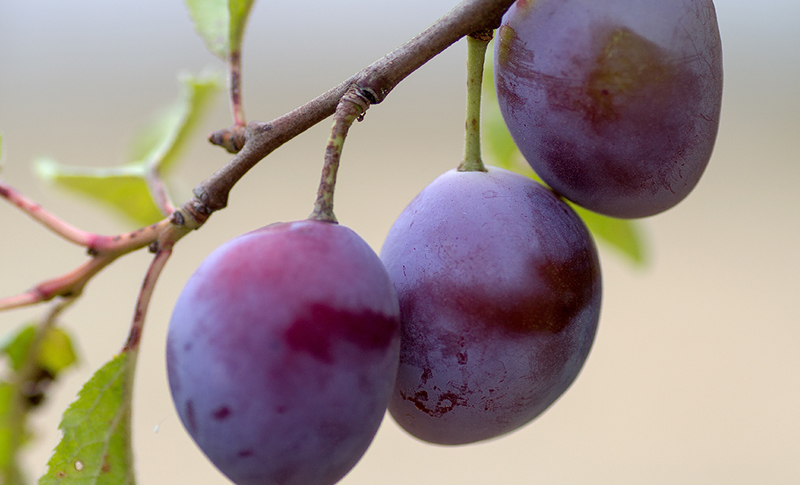
- Plums are hard-pitted fruits like peachs, cherrys, almonds, and apricots. About 12 plum species are cultivated throughout temperate regions for their fruit and as flowering ornamentals.
- Plums grow in over 2,000 varieties, in shades of red, blue-black, purple and bright amber.
- When dried, a plum becomes a prune, a name that comes from the fruit's scientific name Prunus.
- Prunes are eaten raw, soaked or stewed alone or with other fruits, and used in jams and desserts. The pulp, stewed fruit, and juice are packaged commercially.
- Plums are native to China, America, Europe and the Caucasus. Greek writers mention cultivated plum varieties being imported to Greece from Syria. The Romans introduced the fruit in Northern Europe. In 1864 there were 150 cultivated varieties.
- Wild plums native to North America were gathered and eaten by aboriginal peoples and European colonists alike. the variety of wild plum seen growing along roadsides in Oklahoma is called "Oklahoma plum" or "sand plum."
- The common European plum has been cultivated since ancient times and probably originated near the Caspian Sea. It was introduced into North America, possibly by the Pilgrims, and is now mostly cultivated in the western United States. Fruits of varieties of this species range in color from yellow or red to green, but purplish-blue is most common. Dried plums, or prunes, are made from the varieties that are richest in sugar and solids.
- Plums have stones like human fingerprints, each one being unique to a particular variety.
- Henry VIII was a plum-eater. Experts were able to identify over 100 individual plum stones found on the flagship of Henry VIII's Mary Rose, which sank in 1545 and was raised in the 1980s.
- A plum's ripeness cannot be judged by its color because each variety has its own color: Santa Rosa plums are dark purple in color, Red plums are redish-purple, and Black plums are deep purple almost black. Yet all plums should be soft when ripe and never hard. The softer the plum the sweeter the plum.
- Certain varieties of plums have such firm flesh and such a high sugar content that they can be dried with little loss of their original plumpness and flavor. These plums are called prune-plums, and the dried plums themselves are called prunes. The ancient peoples of the Middle East were probably the first to dry plums to make prunes.
- One medium-size plum contains 36 calories and is a source of Vitamin C and of antioxidants that may help prevent the oxidation of cholesterol that can damage arteries. In fact, plums provide just as much antioxidant as blueberries. Plums and prunes are also high in potassium. Prunes are a good source of vitamins A and B, are high in fiber, and are rich in iron, calcium, and phosphorus. Their pulp is used as food for infants.
- Plum pudding, a traditional Christmas dessert from medeival England, is a steamed or boiled pudding which, oddly, has never contained plums. In the 17th century, the word "plum" referred to raisins or other fruits used in cakes, puddings, etc. This use probably arose from the substitution of raisins for dried plums or prunes. Plum pudding does contain raisins, which are called plums only when used in plum pudding. Traditionally in England, small silver charms were baked in the plum pudding. A silver coin would bring wealth in the coming year; a tiny wishbone, good luck; a silver thimble, thrift; an anchor, safe harbor. It was also traditional for everyone who lived in the household to simultaneously hold onto the wooden spoon, help stir the batter for the pudding, and make a wish. During the Puritan reign in England, plum pudding was outlawed as "sinfully rich."
- The word plum, used to mean something desirable, is first recorded is 1780, probably in reference to the sugar-rich bits of a plum pudding.
- A sugar plum is simply a small piece of sugary candy.
